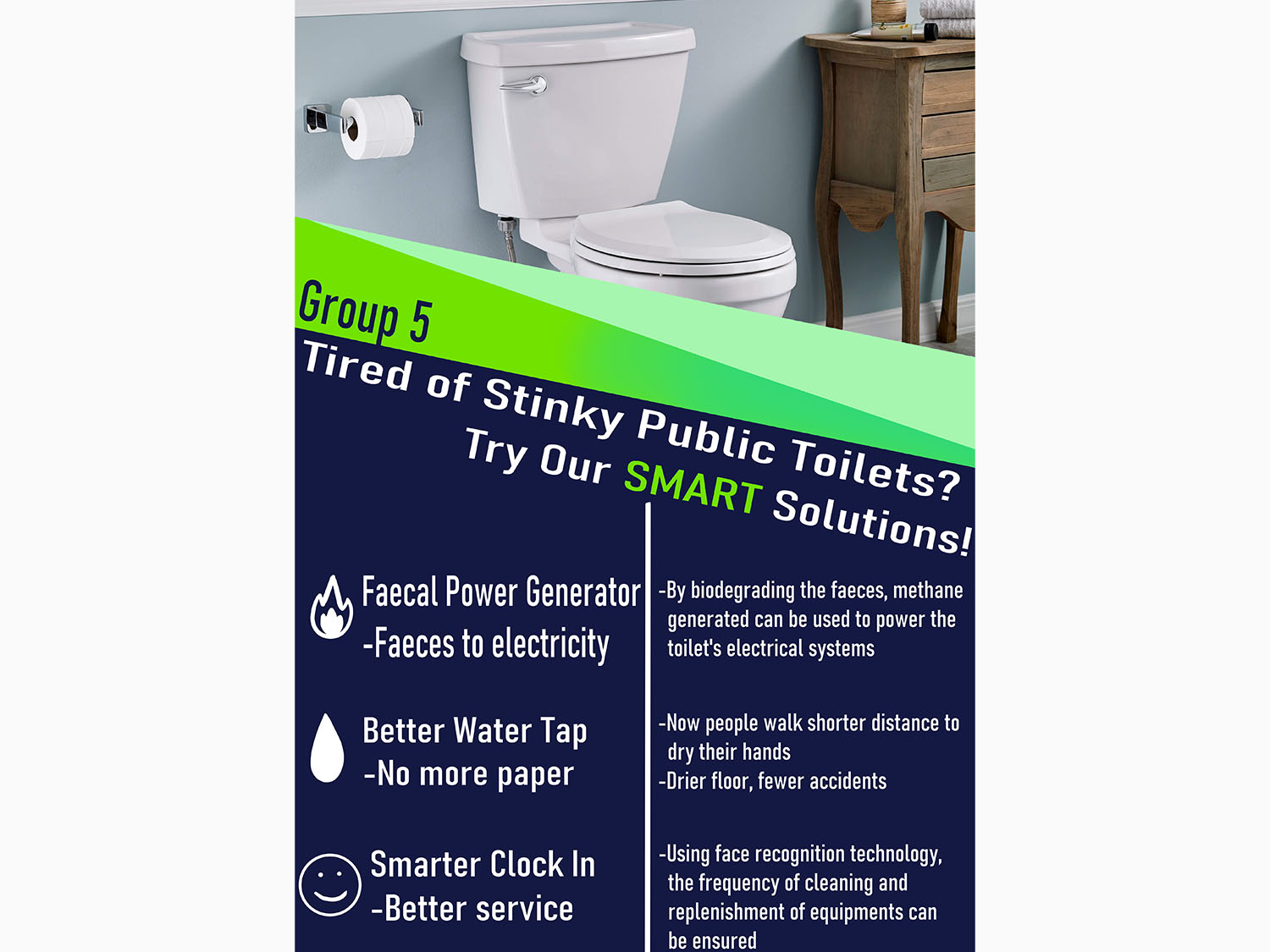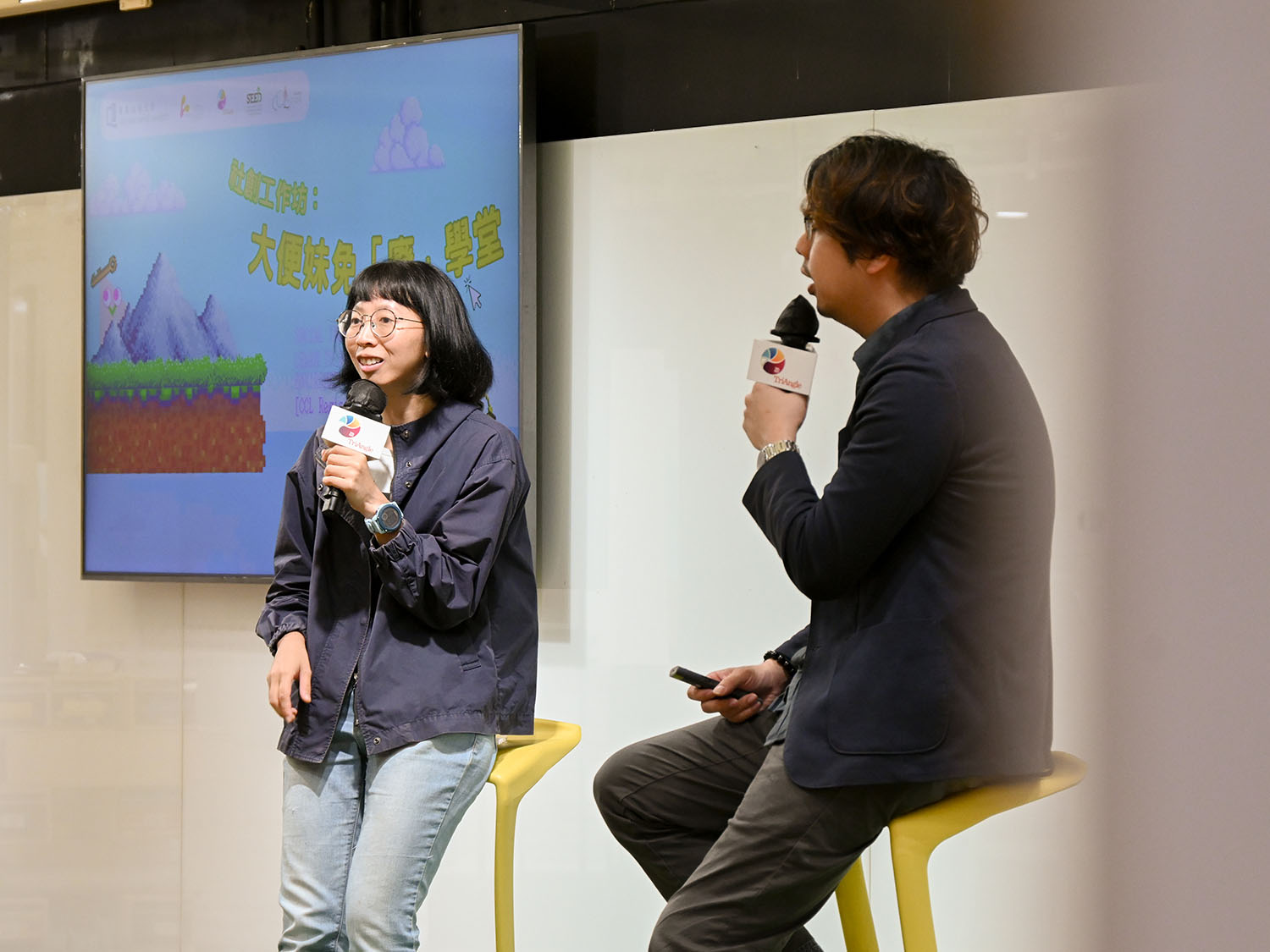SDG 06: Clean Water and Sanitation
The General Education capstone course, "Design for Smart City: Towards Sustainable Living" taught by Dr Zuneera Umair and Mr Pang Yan-lung, not only provided students with a thorough understanding of sustainability and social responsibility but also engaged them in a series of technological innovation training activities. Students conducted research and evaluated key concepts related to smart cities, such as AI and big data. They also co-designed sustainable solutions with community partners to address societal challenges through the application of interdisciplinary knowledge. For example, they designed a waste sorting sensor to enhance environmental sanitation and proposed innovative strategies to improve public toilet hygiene. Through these projects, students developed a leadership mindset on sustainability issues and practices. Simultaneously, it provided them with valuable opportunities to contribute to the community.
Harmony in action: Empowering environmental custodianship through STEAM integration
A STEAM project, "Toxic Tree: Sleep with Microplastic", organised by the Cultural Literacy Programme of the Office of Student Affairs, combined science and art to raise awareness and understanding of microplastics, inspiring individuals to actively safeguard the environment through personal choices, community projects, or advocacy work. It engaged over 1,000 participants from kindergarten to university communities over a two-month period. The project involved collaboration with 12 students from various disciplines, including Applied Biology (Environmental Science), Business Administration, Public Relations and Advertising, Ethics & Public Affairs, and Government and International Studies. Participants conveyed environmental messages through different interactive methods, such as storytelling, self-assessment, and sharing scientific information. In addition, workshops included crafting eco-friendly items and repurposing discarded peach blossom trees into artwork for air purification.
Wave of change: A thought-provoking conversation on water sustainability
At the Social Innovation Workshop hosted by TriAngle, the co-working space of the Centre for Innovative Service-Learning, environmental advocate Ms Yeung, widely recognised as Sheeppoo, gave students an insightful session on the principles of sustainable living. She emphasised the crucial relationship between a green lifestyle, waste management, and environmental protection. Before the ban on plastic tableware was implemented, Sheeppoo had begun to advocate for the habit of carrying personal tableware as a step towards a more sustainable future. By sharing her experiences of beach clean-ups in Hong Kong and Taiwan, she inspired the students with practical steps to reduce waste and helped them realise the importance of protecting marine ecosystems. Her engagement gave students a fresh perspective on how to positively impact water sustainability.
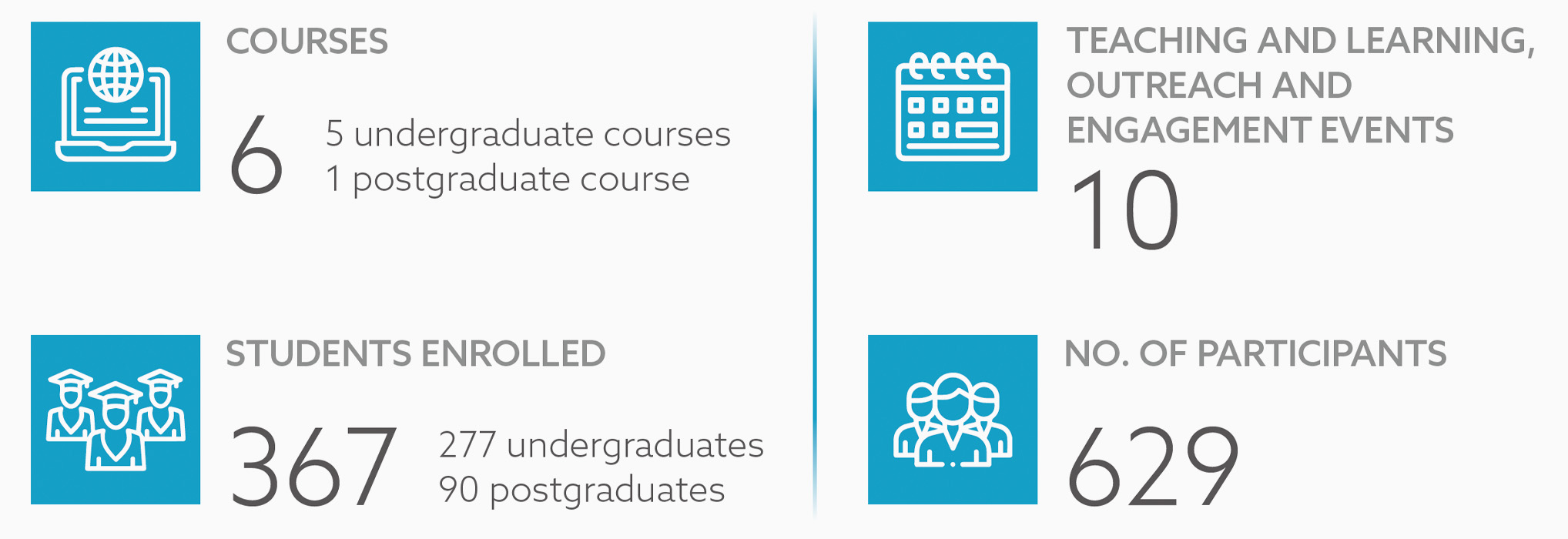

Department of Chemistry
Authors: Angel Wing-Yin KONG, Japhet Cheuk-Fung LAW, Kelvin Sze-Yin LEUNG*
*Corresponding author
The potential risks to human health associated with emerging contaminants in the aquatic environment have raised concerns among scientists, environmentalists and public officials worldwide. Quaternary ammonium compounds (QACs) are extensively used in disinfectants, pharmaceuticals and personal care products. Due to their exceptional antibacterial properties, QACs were heavily used during the COVID-19 pandemic and continue to be heavily used as COVID-19 becomes endemic. The widespread use of these antibacterial products has led to the detection of QACs in the aquatic environment.
To better understand the potential threats posed by these QACs, the transformation of these chemicals in water has been studied - when water containing QACs is treated with the UV/monochloramine (UV/NH2Cl) process, toxic N-nitroso-N-methyl-N-alkylamines (NMAs) are formed. This study provides the first evidence that QACs are specific and significant precursors of NMAs. Further, it reveals that the molar formation yield of NMAs formed from QACs is much higher than the yield of N-nitrosodimethylamine (NDMA), a classic notorious emerging contaminant. From the in silico prediction, it shows that these NMAs exhibit much higher toxicity than their parent QACs and NDMA. Greater attention should be given to the formation of NMAs and their potential threats to the ecosystems and humans.
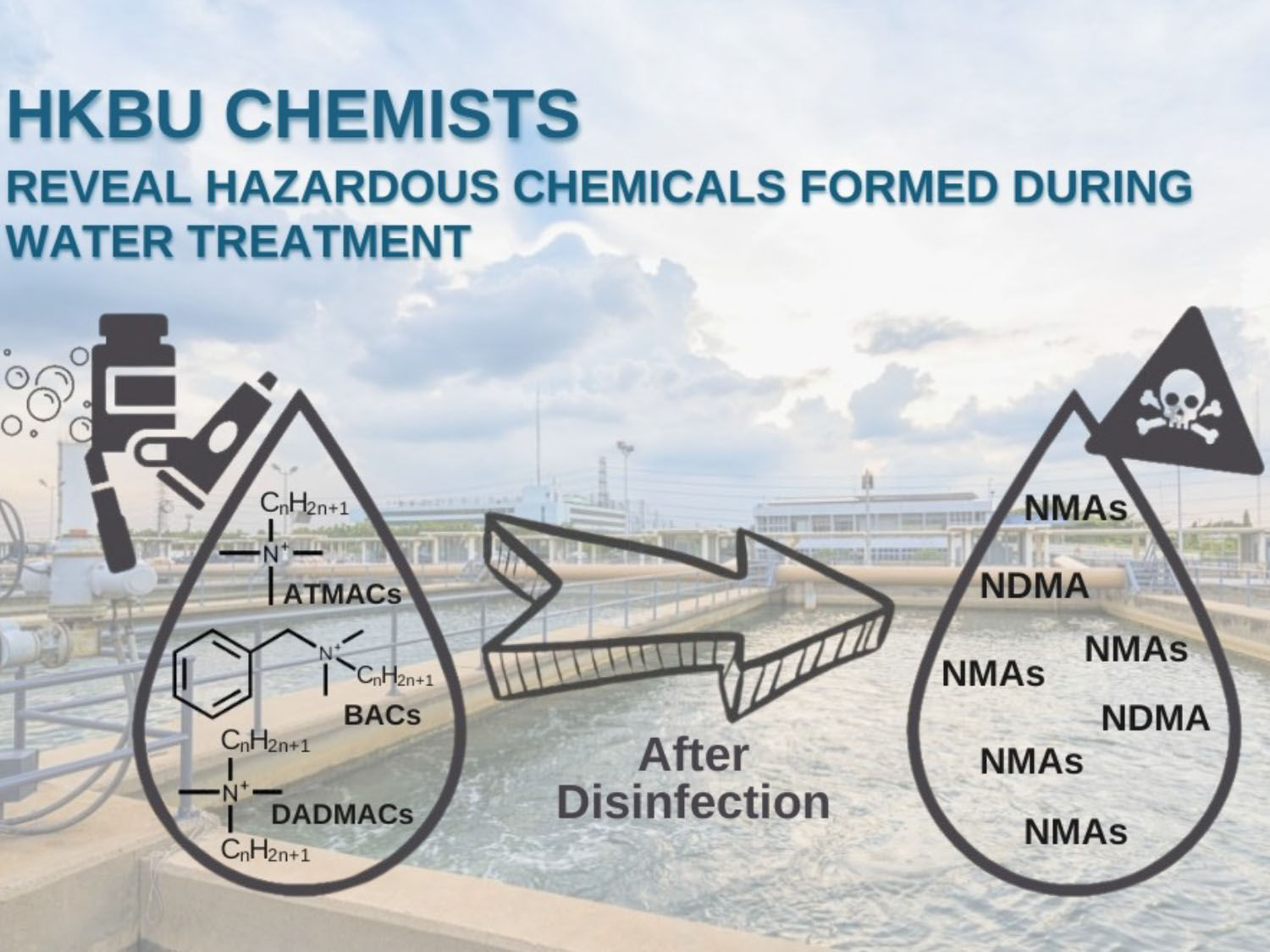

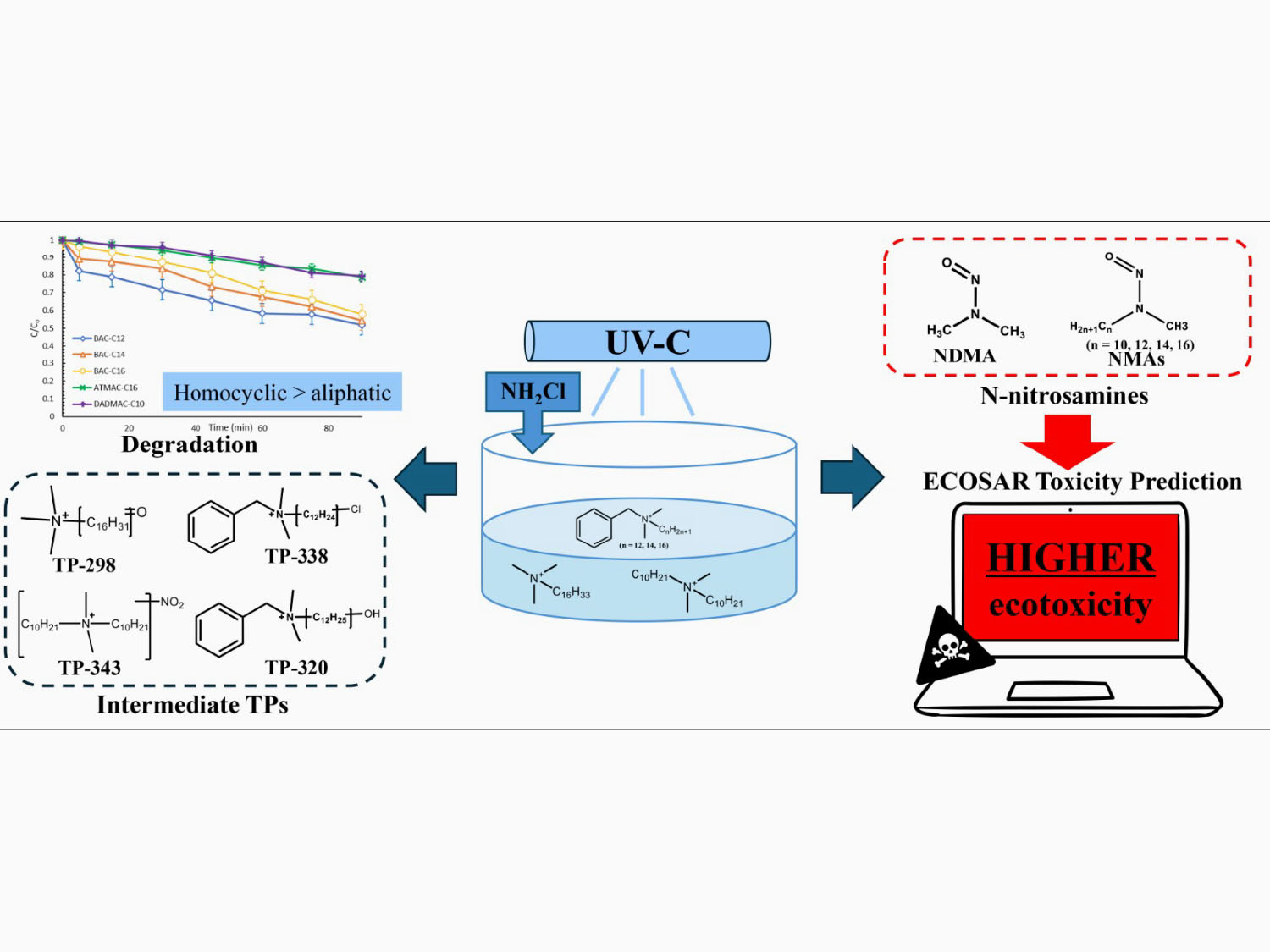

Anaerobic mono-digestion and co-digestion of food waste and mixed sewage sludge: A comparative analysis of metabolic patterns and taxonomic profiles
Department of Biology
Authors: Lijun LUO, Nirakar PRADHAN*
*Corresponding author
The study explored how various organic waste types influence biogas yield and microbial dynamics in anaerobic digestion, assessing both individual and mixed waste sources. It was found that mono-digestion of food waste (FW) produced the highest methane yield (377.25 ± 29.55 mL/g VSfed), while co-digestion with waste-activated sludge (WAS) enhanced stability and reduced the lag phase.
Microbial analysis revealed a dominance of Firmicutes, especially Clostridium, in FW treatments, in contrast to the diverse microbes present in sludge treatments. Enzymatic activities suggested a degradation sequence from starch to cellulose, which was supported by gas and organic acid profiles. The study indicates that selecting the appropriate feedstock combination is key to optimising methane production, and that multi-omics approaches could address challenges associated with the slow degradation rate of proteins. Furthermore, this research advances our understanding and offers guidance for more sustainable organic waste management for clean energy and biofertiliser production.
More information can be found here: https://doi.org/10.1016/j.cej.2024.151397


The University has installed a rainwater harvesting system to collect and store rainwater for irrigation purposes. By strategically capturing rainwater from rooftops, this innovative system reduces reliance on municipal water sources. This not only conserves precious water resources, but also promotes sustainable practices in water usage.
Accessible drinking water stations
Water bottle filling stations have been installed across the campus, providing the community with a safe and convenient option to access free drinking water. This initiative helps minimise the use of disposable plastic bottles, supporting the University’s commitment to environmental sustainability.
Safeguarding water integrity
The University has implemented oil interceptors and grease traps in strategic locations, such as catering outlets and car parks. These systems effectively separate and confine oily substances, ensuring that only treated water is released into the municipal water system. This plays a crucial role in safeguarding the environment and maintaining the integrity of the local water supply.


